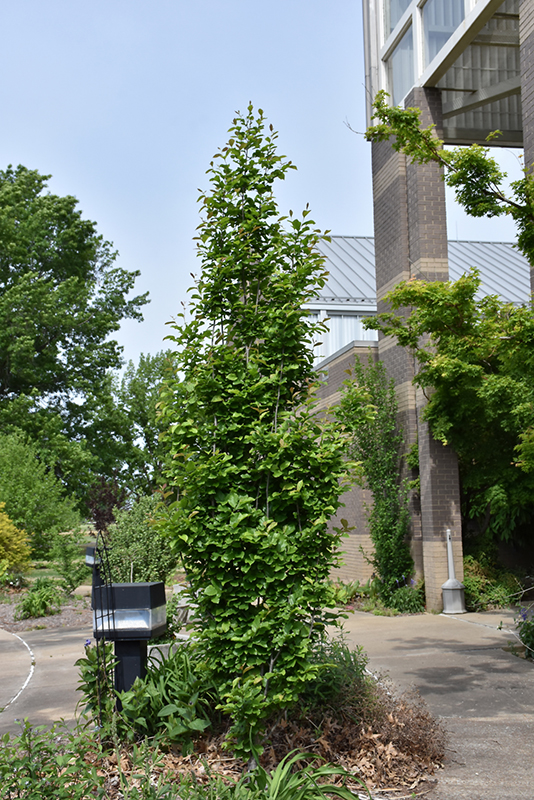Parrotia, Golden Bell Tower Parrotia persica 'Chrishaven 1' Height: 30 feet Spread: 12 feet
Sunlight:
Hardiness Zone: 5a Other Names: Golden Bell Tower, Persian Ironwood Brand: Plants Nouveau Description: A unique variety with a very neat, columnar habit of growth that persists as the tree matures; foliage emerges with hints of burgundy then matures to lime green; fall color is a gold to apricot with dark purple; very adaptable to diverse conditions Ornamental Features Parrotia, Golden Bell Tower is primarily valued in the landscape for its rigidly columnar form. It has attractive lime green deciduous foliage which emerges burgundy in spring. The serrated oval leaves are highly ornamental and turn outstanding shades of gold, peach and deep purple in the fall. The mottled brown bark is extremely showy and adds significant winter interest. Landscape Attributes Parrotia, Golden Bell Tower is a dense deciduous tree with a narrowly upright and columnar growth habit. Its average texture blends into the landscape, but can be balanced by one or two finer or coarser trees or shrubs for an effective composition. This is a relatively low maintenance tree, and is best pruned in late winter once the threat of extreme cold has passed. It is a good choice for attracting birds and squirrels to your yard. It has no significant negative characteristics. Parrotia, Golden Bell Tower is recommended for the following landscape applications; Planting & Growing Parrotia, Golden Bell Tower will grow to be about 30 feet tall at maturity, with a spread of 12 feet. It has a low canopy with a typical clearance of 6 feet from the ground, and should not be planted underneath power lines. As it matures, the lower branches of this tree can be strategically removed to create a high enough canopy to support unobstructed human traffic underneath. It grows at a medium rate, and under ideal conditions can be expected to live for 60 years or more. This tree should only be grown in full sunlight. It prefers to grow in average to moist conditions, and shouldn't be allowed to dry out. This plant should be periodically fertilized throughout the active growing season with a specially-formulated acidic fertilizer. It is not particular as to soil type or pH. It is highly tolerant of urban pollution and will even thrive in inner city environments. This is a selected variety of a species not originally from North America.![]()
![]()
![]()
![]()
![]()
![]()
![]()
![]()
![]()
![]()
![]()
![]()
![]()
![]()

